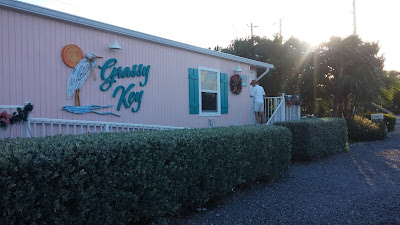When we first came to the Acadiana area of Louisiana we were surprised to see rice paddies. But we learned that Louisiana is the third largest producer of rice in the U. S., behind Arkansas and California.
 |
| Added to Nat'l Register of Historical Places |
 |
| Formerly Conrad Rice Company |
In the country store, we watched a 20-minute video on Cajun culture and the beginnings of rice and the rice industry. We walked next store to the actual mill where the basic objective of a rice milling system is to remove the husk and the bran layers, and produce an edible, white rice kernel.
 |
| Designated in 1981 |
The old mill has been in operation since 1912 and is still growing strong today. The guide told us all the equipment still worked. A historic place must have historic context, must be original and must not be updated. We found it interesting that if a part breaks, a new one must be made or the mill could lose its historical status.
 |
| The "Cupboard" Illustrates Milling Process |
The tour guide had a model of the mill which showed how the rice looked after each stage of the process; cleaning, hulling, milling, polishing, grading, sorting, packing and storing.
 |
| Rice Conveyor |
It feels as though the mill is frozen in time because of its vintage appearance. The 105 year old cypress floors are covered in what looks like fine sand. But the dust is actually dust from rice hulls, the bran taken off the rice.
 |
| Antique Equipment |
 |
| Note the Lanterns |
F |
| Bagger Accommodated Different Farm Crops |

I bought a two pound bag of wild pecan rice that tastes pecan-like when cooked. There are no pecans in the rice, they just call it that. It has to do with the milling process. LSU worked with growers to develop this hybrid rice, although it can't be classified as organic. I was cautioned to either freeze or refrigerate this rice.


















